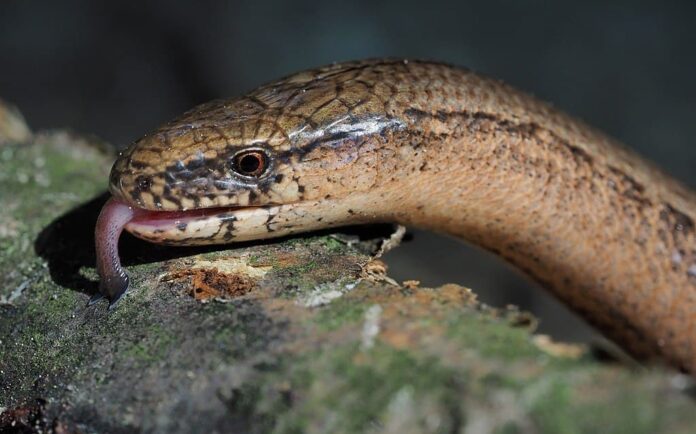Wait, aren’t legless lizards snakes? No, they are not. Legless lizards are the types of reptiles that have independently lost their limbs or reduced them. There are several things that separate them from snakes such as external ear openings, eyelids, lack of board belly scales, and more. With so many species, we are going to take a look at only 7 legless lizards today, so check them out.
1Burton’s Legless Lizard
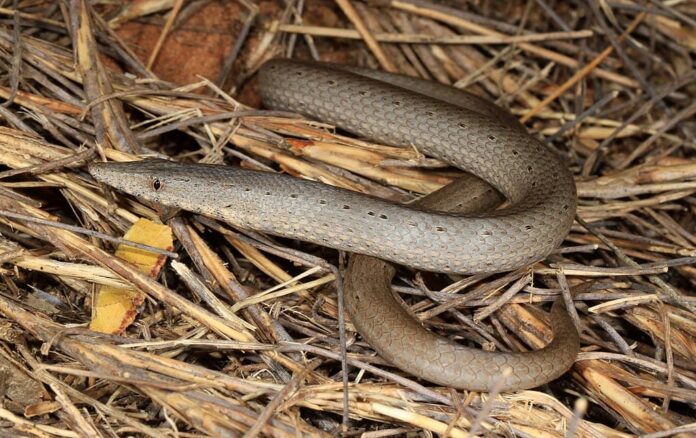
This is one of the legless lizards that people thought were snakes at the first glance. Also goes by the name of flap-footed lizards and snake-lizards, this species is endemic to Australia and Papua New Guinea. This one is interesting because it can also hiss and rear when threatened although they totally are harmless. Just like most lizards, this one also drops its tail to escape and then regrow a new one right after that.
Burton’s legless lizards feed on small reptiles, skinks and other legless lizards are also parts of their menu. As a ferocious ambush hunter, it waits for the right time before pouncing with great speed and accuracy. Usually, it grabs the prey around the chest, suffocating the prey before eating head first. These lizards have flexible jaw that allows them to dislocate and wrap completely around their victim. Some hobbyists also have them as pets due to the fact that these lizards are quite intelligent.
2California Legless Lizard
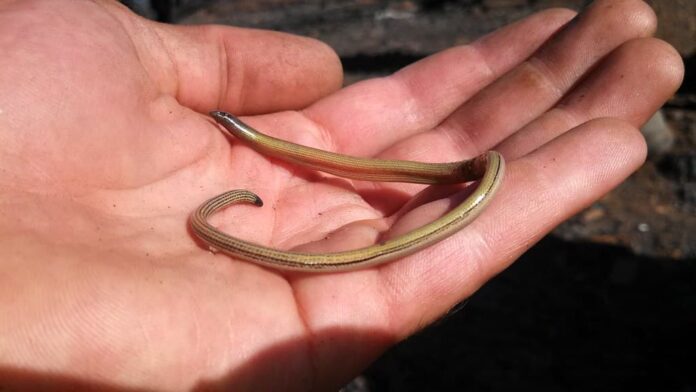
With a slender body and long length, we all thought this was a snake when it is actually not. The California legless lizards are pretty charming with their smooth shiny scales and fascinating colors. Some of them are beige in color while others are black, dark brown, or even metallic silver. The appearance that all of them share is the dark line along their back and several thin stripes between scale rows. These legless lizards live and forage in shrub or vegetation areas, and they require loose sand for burrowing. Since they prefer lower temperatures (usually between 21 and 28 degrees Celsius), these California legless lizards live mostly underground. They feed on ants, beetles, larval insects, spiders, termites, and more, and they will pull their prey beneath the surface for consumption.
3Common Scaly-Foot
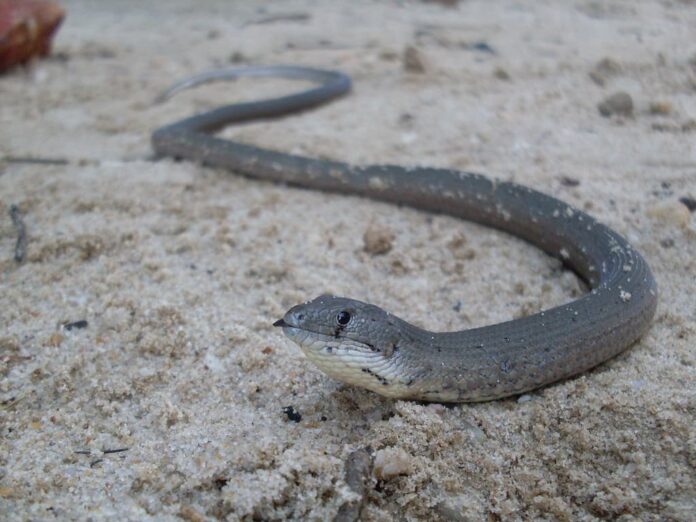
With a length of up to 80 centimeters, the common scaly foot resembles so closely to a snake. It is one of the widespread legless lizards endemic to Australia, and it is very interesting. This lizard is both crepuscular and nocturnal, and they can live in both high and low temperatures. Their habitats are usually in heaths, long grasses, and woodlands where they often look for food such as burrowing spiders. When threatened, they neither bite nor hiss. Instead, these long legless lizards flash their thick fleshy tongue at the intruders or predators, mimicking the snakes. You can have them as a pet, but you have to get a license to have one of these in Australia. Also, they would eat other lizards in captivity so remember that part as well.
4Pink-Tailed Worm-Lizard
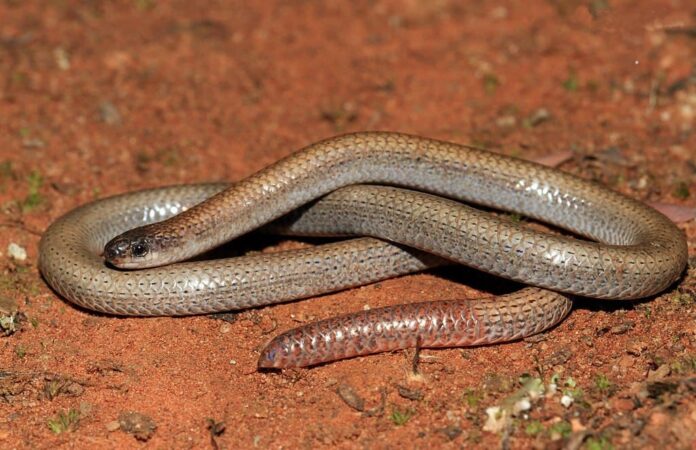
Here you are looking at a rare species of legless lizard in Australia, and this one looks like both a snake and a worm. Just like the name suggests, it has a pink tail with a white color underneath its body. The pink-tailed worm lizards have round heads and tails, and this species is one of the smallest reptiles in Australia. Because of their small size, they are often confused with baby snakes. As underground lizards, they spend most of their time in ant nests to feed on ant eggs and larvae. The females of this species only lay 2 eggs per clutch each year, and it takes them around 4 years to reach maturity. This is why their population is very low besides habitat fragmentation, hence their species being threatened.
5Sheltopusik
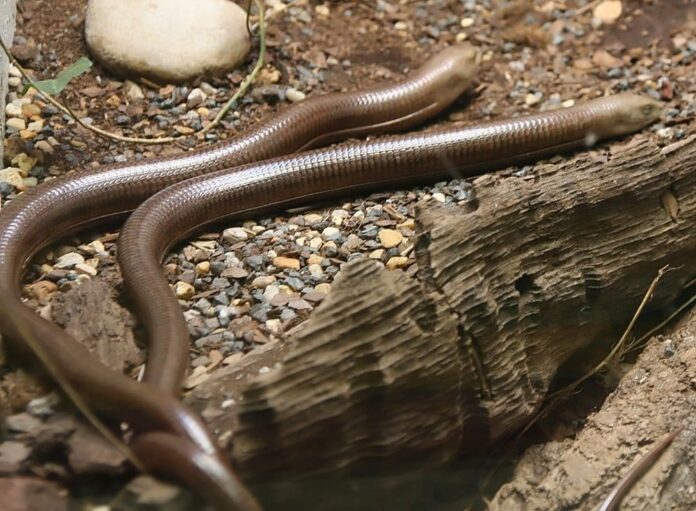
The sheltopusik or Pallas’s glass lizard is a large glass species inhabited from Southern Europe to Central Asia. Their habitats are usually arid areas, foothills, river valleys, short grasslands, shrubs, sparsely wood hills, and vegetated rocky slopes. These glass lizards are most active in wet weather, looking for slugs and snails which are their favorite food. Apart from those, they also feed on arthropods, small mammals, and pretty much other prey they can hunt.
Because of the color and the scale texture, these legless lizards look like a cross-breed between an armadillo and an earthworm. And if you look even closer, this limbless lizard also looks quite like a mini dragon with those fierce eyes. This species is probably among the aggressive legless lizards since they will bite, hiss, and musk if bothered or threatened. Their last defense mechanism is tail dropping, and it will grow back after a period of time.
6Slender Glass Lizard
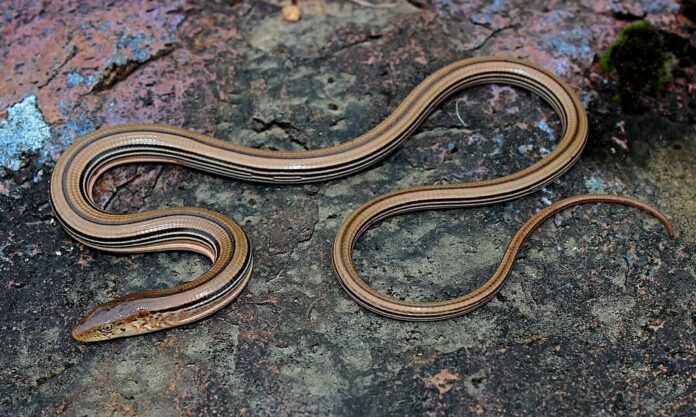
Long and slender, this glass lizard species looks more like an eel due to its pointed face. This limbless lizard has either a brown or yellow body along with 6 stripes. The part where they can be easily recognized is the presence of dark markings below the lateral groove. Slender glass lizards are found in the United States, and their habitats are in old fields, open woodlands, and prairies. Another interesting thing is that these lizards have a wide range of food despite being limbless. They feed on insects, snails, spiders, and even small rodents, and they can expand their body when eating large prey. Not different from their members in the lizard family, this species also breaks off its tail to escape from predators.
7Slow Worm
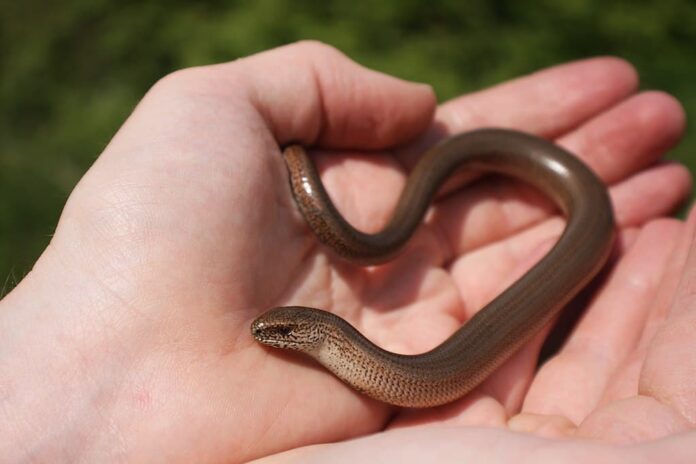
Neither a worm nor a snake, a slow worm is a legless lizard that lives on grasslands and heathlands. This species is native to Britain, and they are also common in the garden and woodlands as well. These limbless lizards are diurnal, and they usually hunt for food at dusk. During the daytime, they prefer to hide under tree logs from both predators and the sun. Slow worms have smooth golden-gray skin, males have blue spots while females have dark sides and stripes on the back.
The male lizards bite the back of their chosen female during mating rituals, then they entwine their bodies for copulation. As for the defense mechanism, slow worms poo when they are scared. If in need of escape, a slow worm would shed its tail to increase the chance of survival. And of course, they can always regrow their tails back. Another interesting thing is that they have a lifespan of over 30 years, making them probably the longest-living lizard species.
Related Post: Carnivorous Lizards With Forked Tongues

